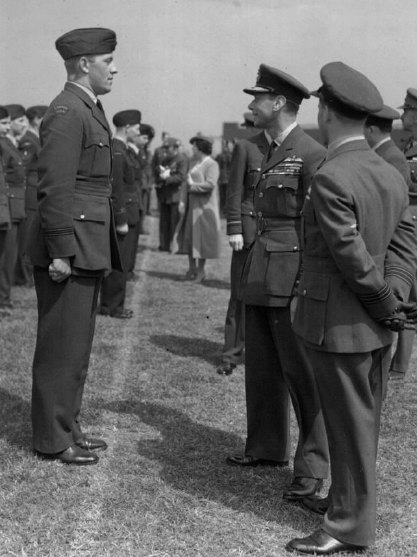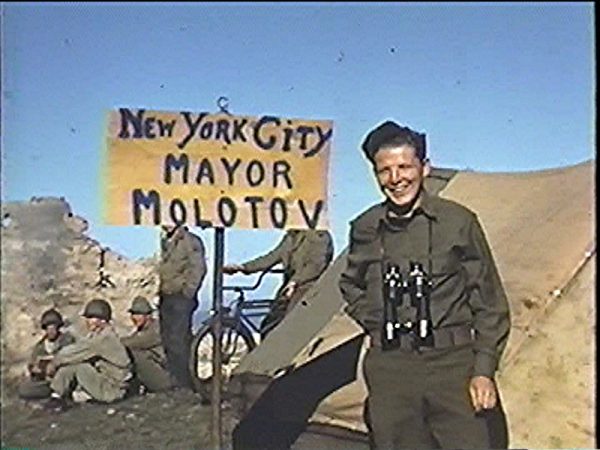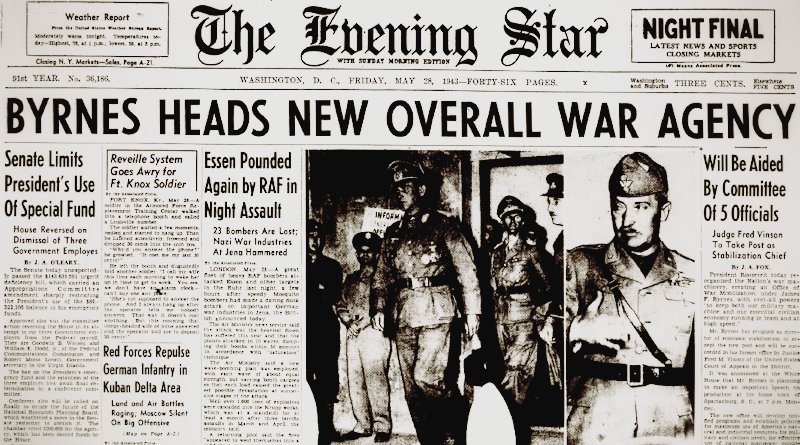World War II Chronicle: May 28, 1943
Click here for TODAY’S NEWSPAPER
Captured German and Italian generals are pictured on the front page, some of whom we discussed earlier in the month… On page four we learn of an American officer who participated in this month’s daring Dambuster raid into Germany. Flight Lieutenant Joseph C. McCarthy left the United States in 1941 to volunteer for the Royal Canadian Air Force. McCarthy was already a veteran of 30 raids over Germany when he was selected to fly the “T-Tommy” Lancaster bomber. His crew found and hit the Sorpe Dam, but their bomb had no effect on the target. For his role in the daring operation King George presented McCarthy with the Distinguished Service Order. McCarthy flew 80 combat missions as a bomber pilot and became the commanding officer of the German Aircraft Flight, testing dozens of captured Luftwaffe aircraft during the war. He also flew the Gloster Meteor — England’s first jet warplane…

Page eight tells an interesting story about a troublemaker soldier with a real knack for scouting and a silver tongue that got him out of multiple courts martial. Pvt. Karl C. Warner finally met his end, but not until after talking a battalion of Italians into surrendering to him. Pvt. “Molotov” served in the 60th Infantry Regiment, 9th Infantry Division and perished on April 25…

George Fielding Eliot column on page 10… Page 13 reports that the flooded Mississippi River has reached a record height at Cape Girardeau, Mo., the town right next door to me. Flood stage here is 32 feet, and the previous record was 42 feet back in 1844, a near-perfect example of a “100-year flood.” The current record is 48 feet which occurred in 1993, a staggering 30 feet higher than it currently is as I write this. Before moving to Cape I remember riding the bus there to play a football game. We didn’t know how the bus driver could see where he was going, but for much of the trip the highway was flooded…
Sports section begins on page 18… A story on the Navy’s fast-paced finishing school for aviators on page 28… On the same page, Oakland firemen battled a six-alarm fire at the shipyard. You’ve probably heard the term “five-alarm” before, signifying something hot, like five-alarm chili. But what is a sixth alarm? Well, if there is a fire, they put out an alarm. The “first alarm” response is whatever apparatus are assigned to put out a regular fire, like an engine (which carries a pump, hose, and water), a truck (ladders), and a chief vehicle. Say that fire requires more manpower and equipment than what you have on-hand — you dispatch a second alarm. More engines, another truck, another chief. Bigger than that? Ring out a third alarm. And so on. By the time you have a six-alarm fire, that’s a lot of people and trucks. This inferno included the drydock company, a lumber mill, and a paper factory.
Evening star. (Washington, D.C.), 28 May 1943. Chronicling America: Historic American Newspapers. Lib. of Congress.
https://chroniclingamerica.loc.gov/lccn/sn83045462/1943-05-28/ed-1/
